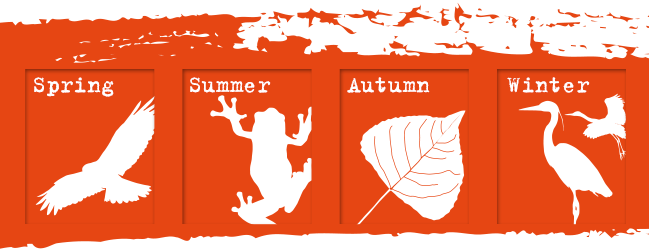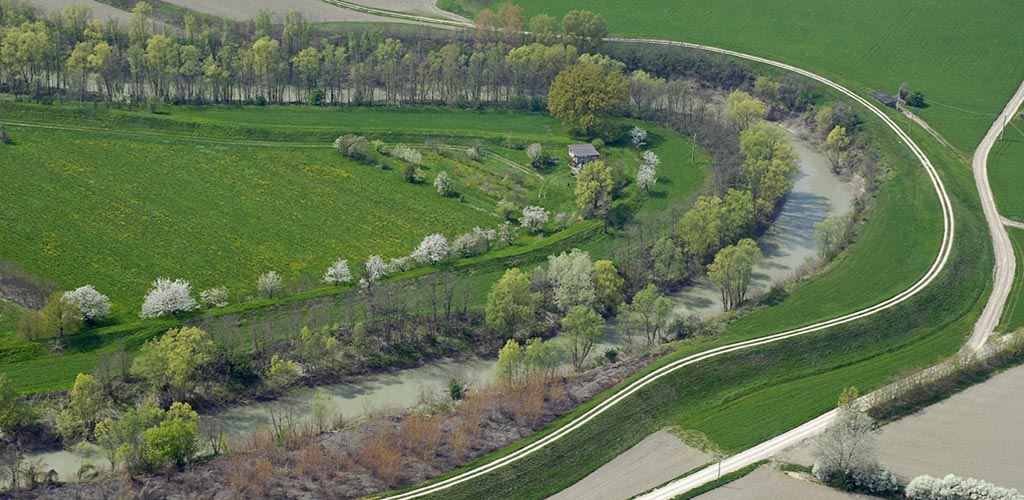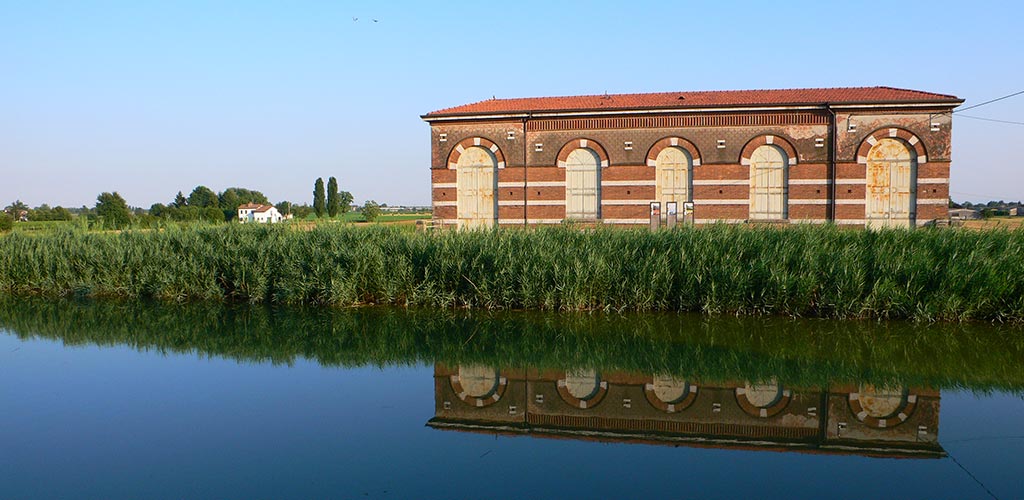“Where the waters of the Oltrepò, nature and humans meet”
Located near the town of Sermide e Felonica, on the south-east edge of Lombardy, the park owes its name to a large colony of gruccioni (bee-eaters), birds with splendid plumage which have started nesting regularly along the Po in the early 2000s.
The wilderness area, set up in 2004, extends over an area of 388 hectares, made up largely of flood plains and huge river islands (like the Schiavi and Bianchi islands). Inside it you will find a landscape typical of the lower course of the Po, made up of inhabited areas along the main embankment, agricultural areas on “closed flood plains”, poplar woods and wetland woods which have spontaneously settled in abandoned quarries, oxbow lakes and huge sandy areas.
In one of these abandoned quarries you can find the “Digagnola” nature area, set up for nature watching and free to enter, with a circular pedestrian and cycle path about a kilometre long.
Near the town of Sermide, right on the Po, is the “Teleferica” building, a unique example of industrial archaeology used as an environmental education centre for the Mantuan Oltrepò Parks System. Right next door to the Teleferica are the tourist docks and the Sermidese Nautical Association facilities. Also worth mentioning, in the town of Felonica, the Park and river dock located opposite the church of Santa Maria Assunta, a stone’s throw from the Po River World War II Museum.
Of notable importance, the hamlet of Moglia contains the Mantua-Reggio Emilia and Revere Agro drainage system (today joined under the Consorzio Terre dei Gonzaga in Destra Po organisation); built in the early 1900s, it sends much of the water of the Mantuan Oltrepò into the Great River Po itself.
The Gruccione Park is connected to the protected areas of the Oltrepò Mantovano Parks System by the Parks Cycle Route, it also lies along the EuroVelo 8 (Cadiz – Cyprus), VENTO (Venice-Tourin) and the Oltrepò Mantovano cycling itineraries No.1, No. 5 and No. 7.
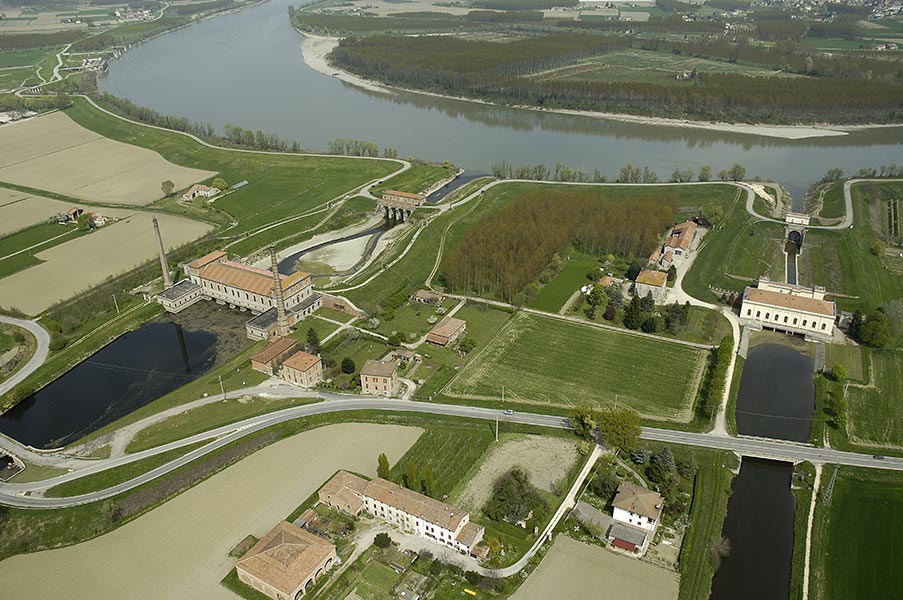
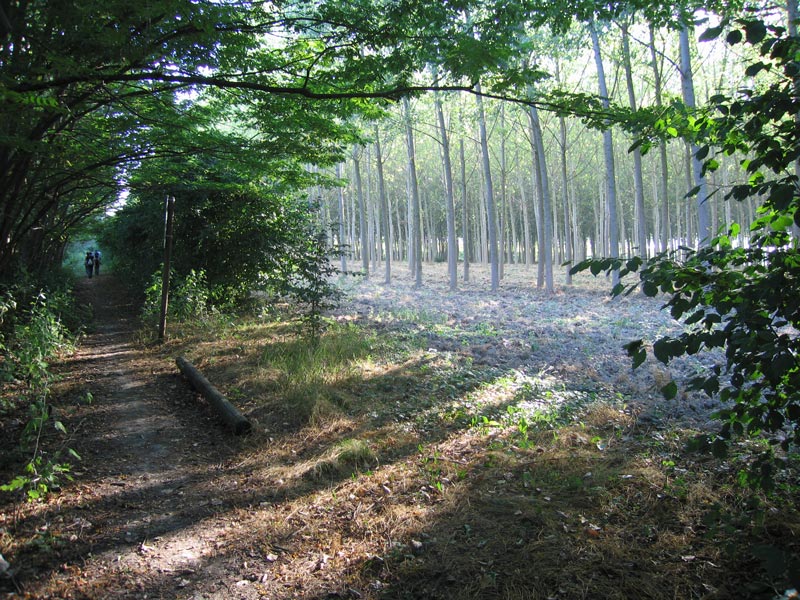
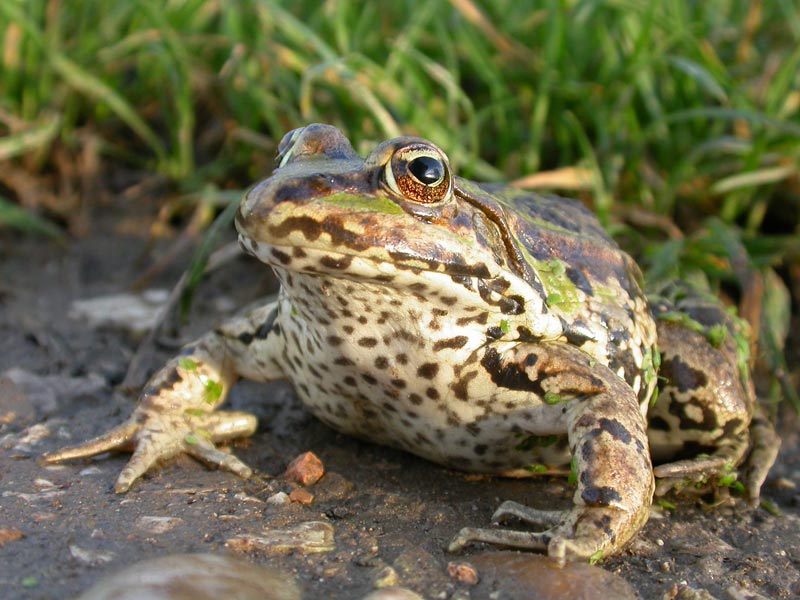
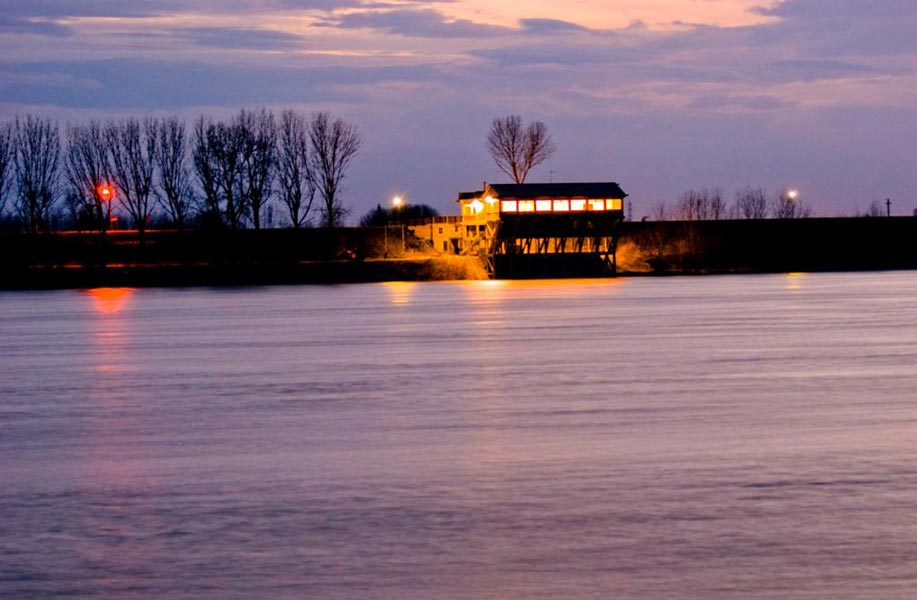
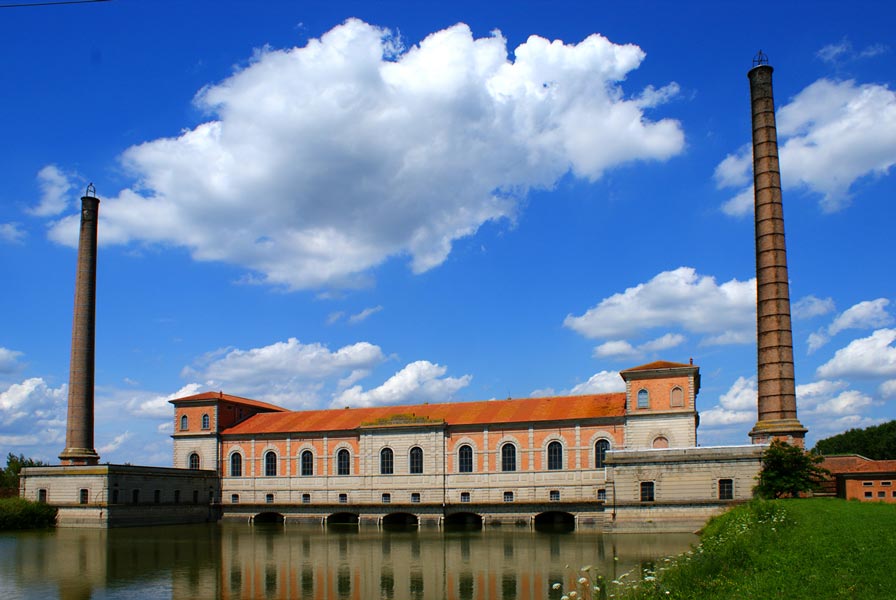
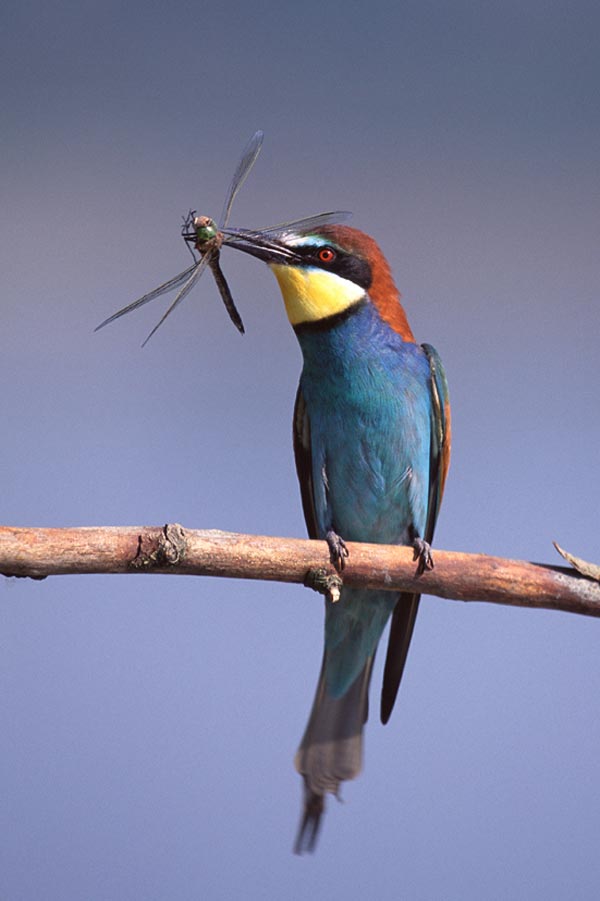
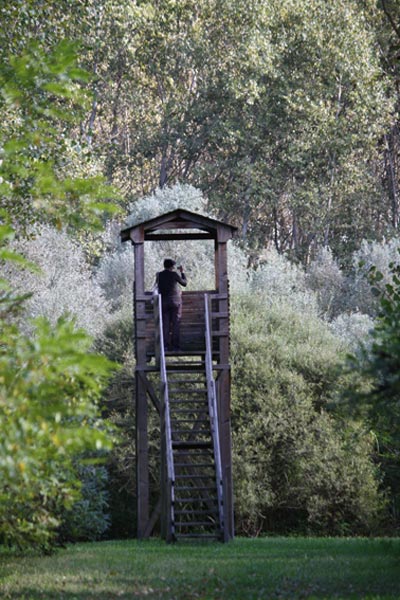
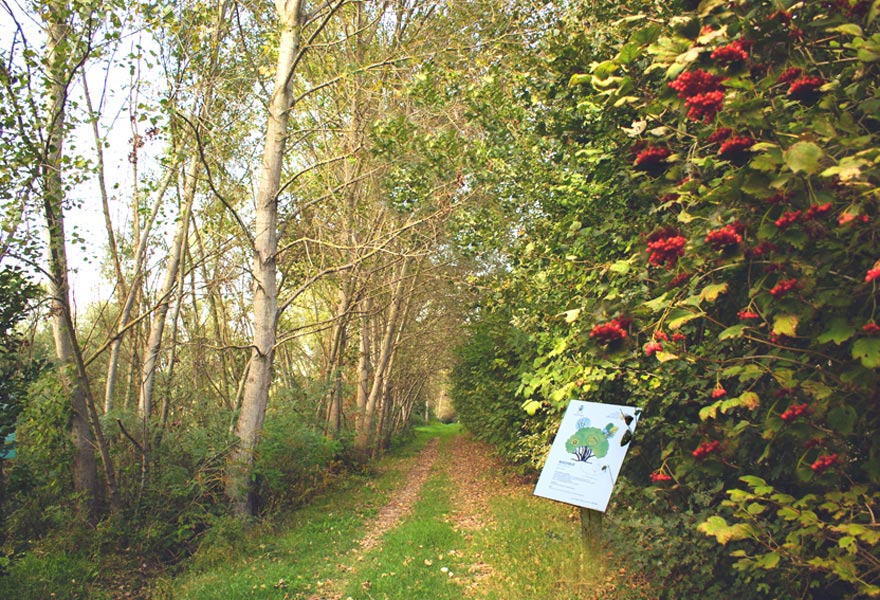
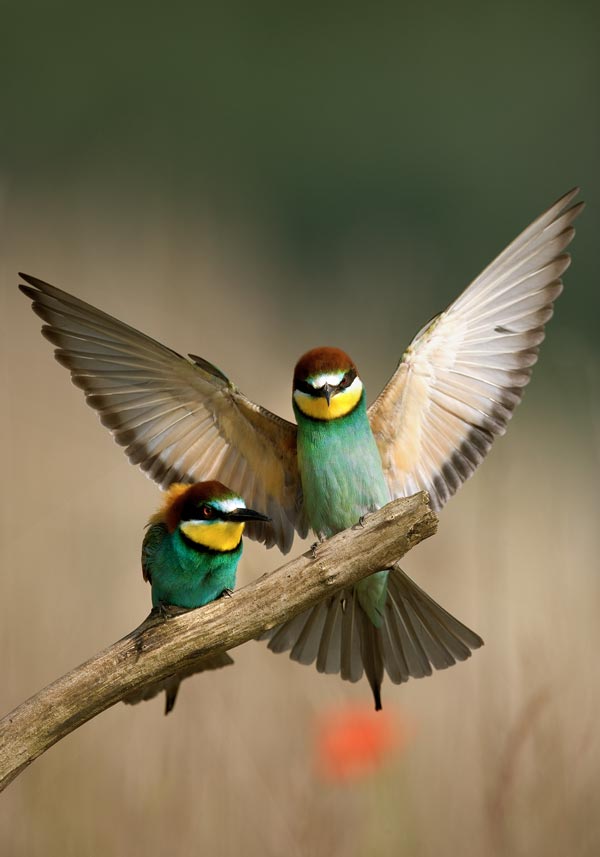
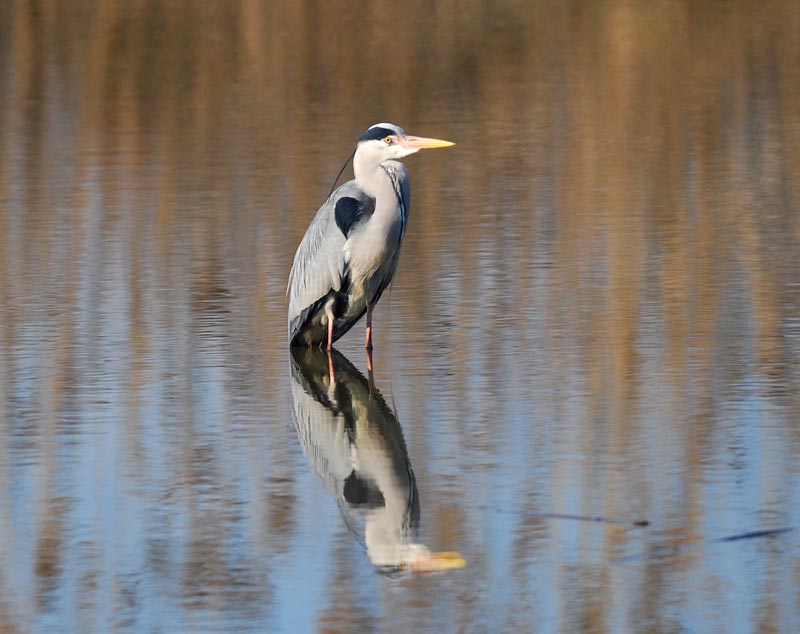
Information
Managing institution: Municipality of Sermide e Felonica
Established in: 2004
Area: 548 hectares
Protection status: Local Park of Supra-municipal Interest
Environment Office, Municipality of Sermide
T 0386 967000
Web site: www.www.sipom.eu
E-mail: info@sipom.eu
Golenale del Gruccione Park
You can enjoy the following surprising experiences in the Gruccione Park
- Admire the Moglia drainage facilities.
- Discover the relationship between a riverside community and its river by visiting the “Teleferica” Environmental Education Centre and the Sermidese Nautical Association.
- Visit the Digagnola nature area.
